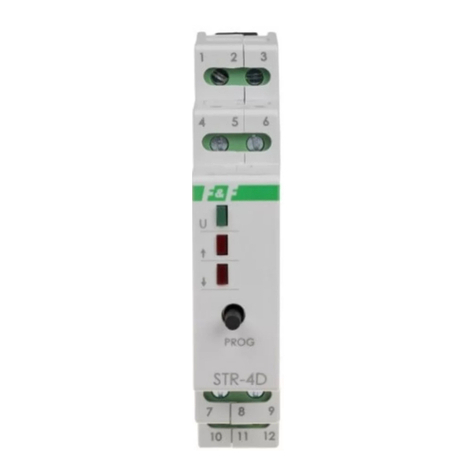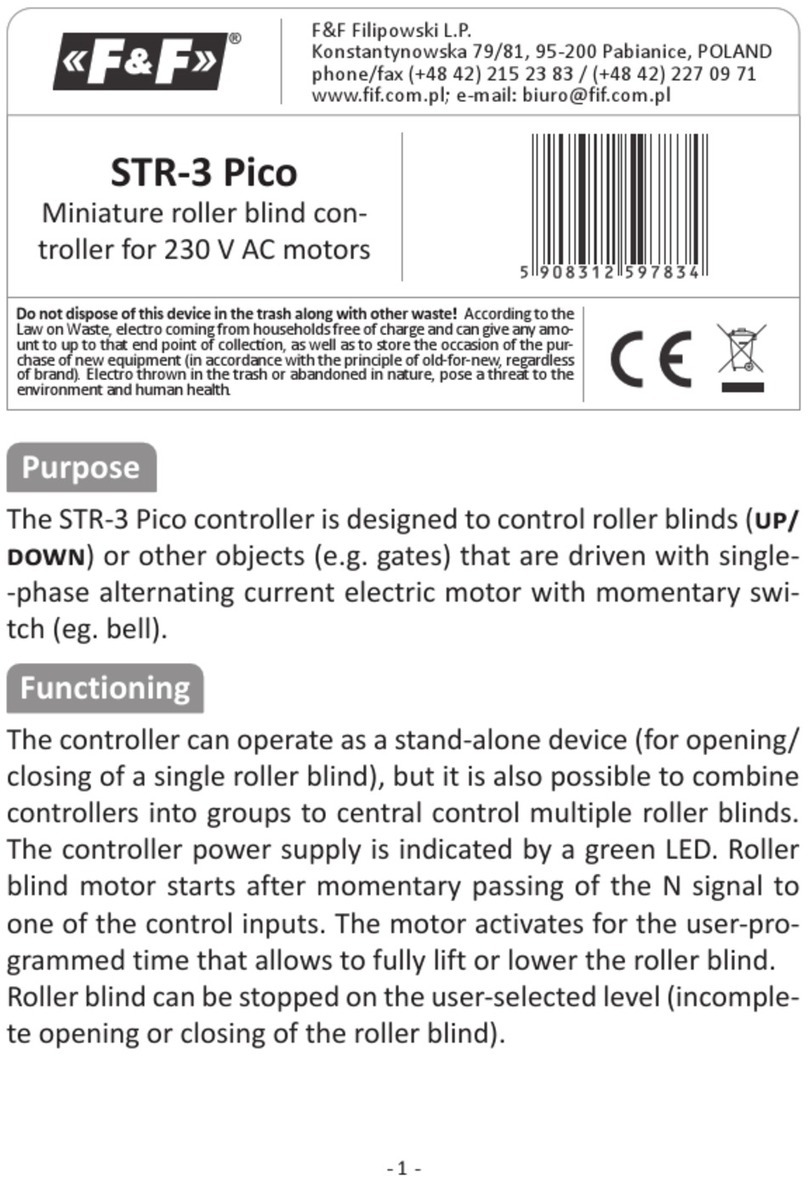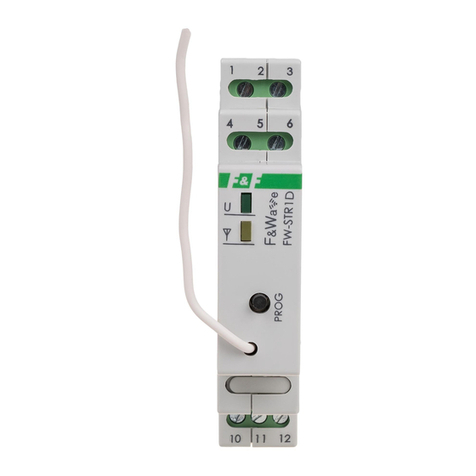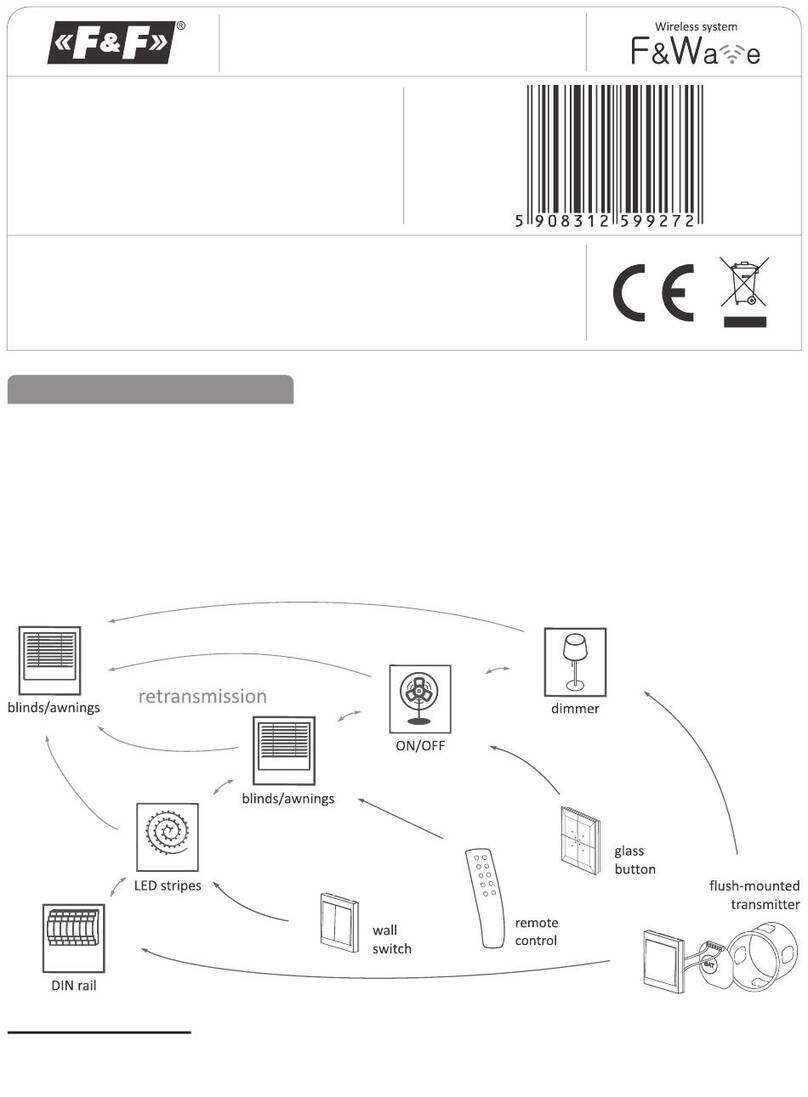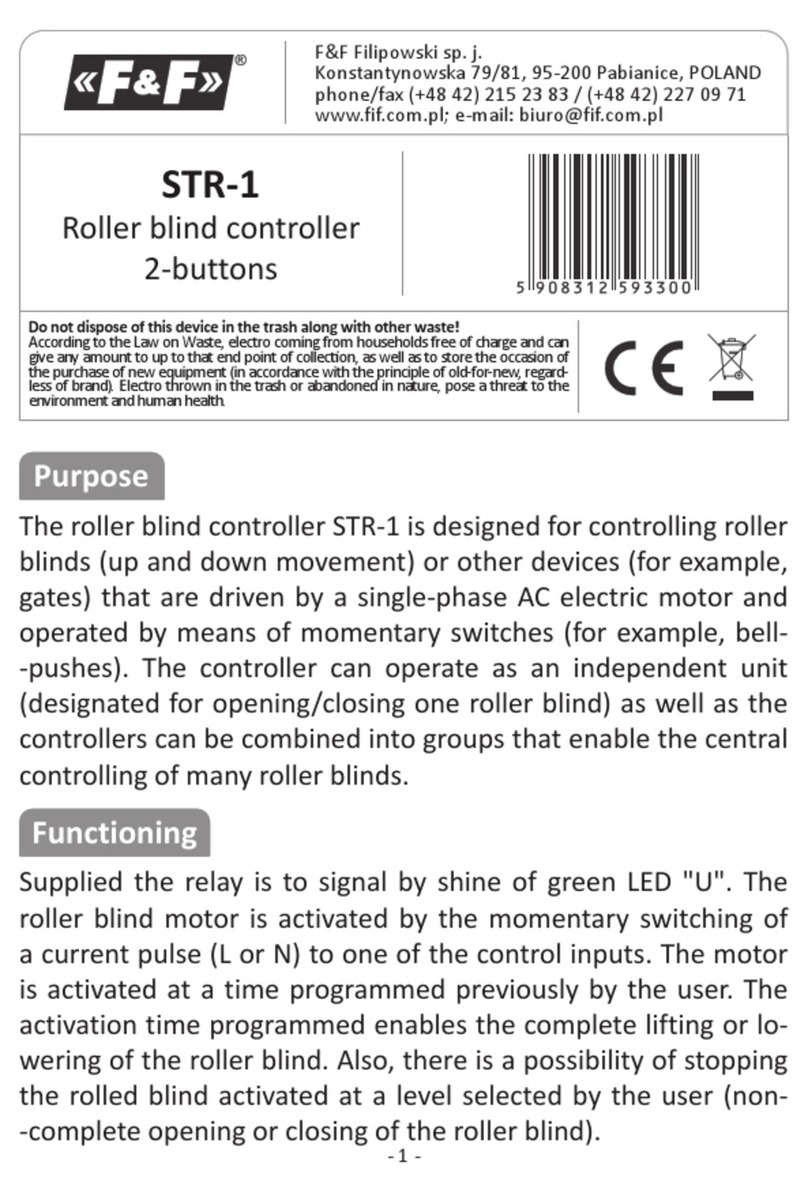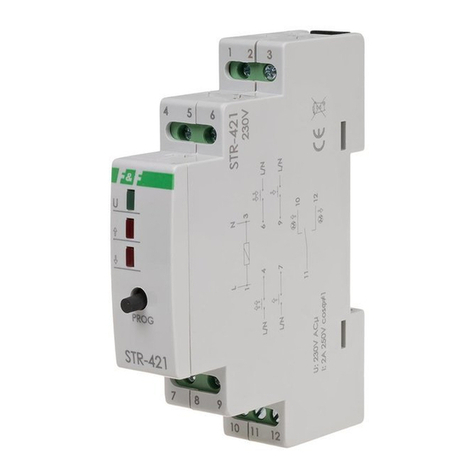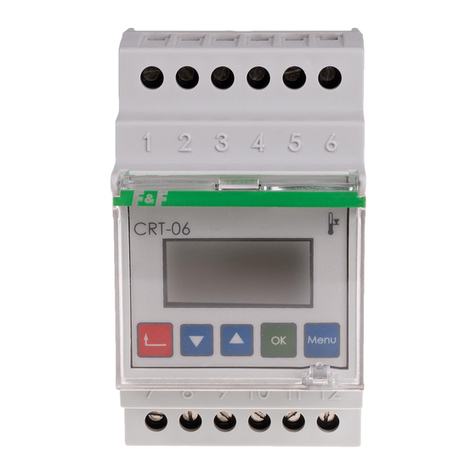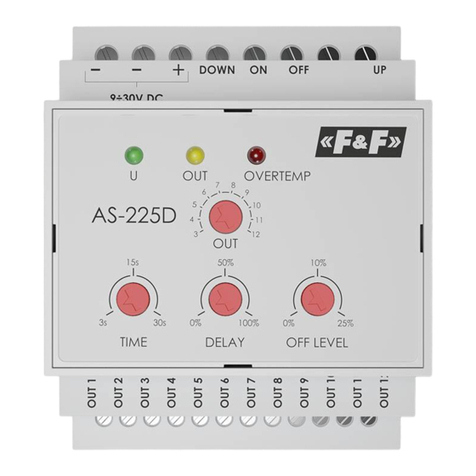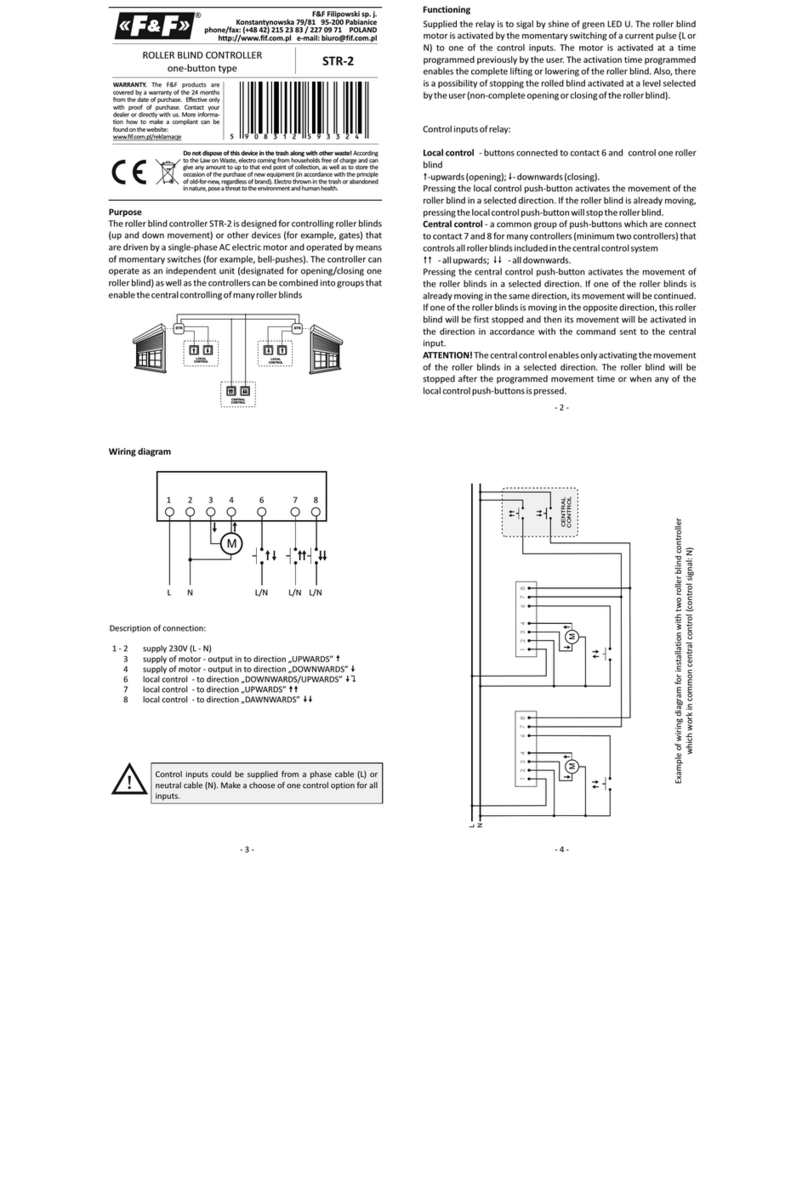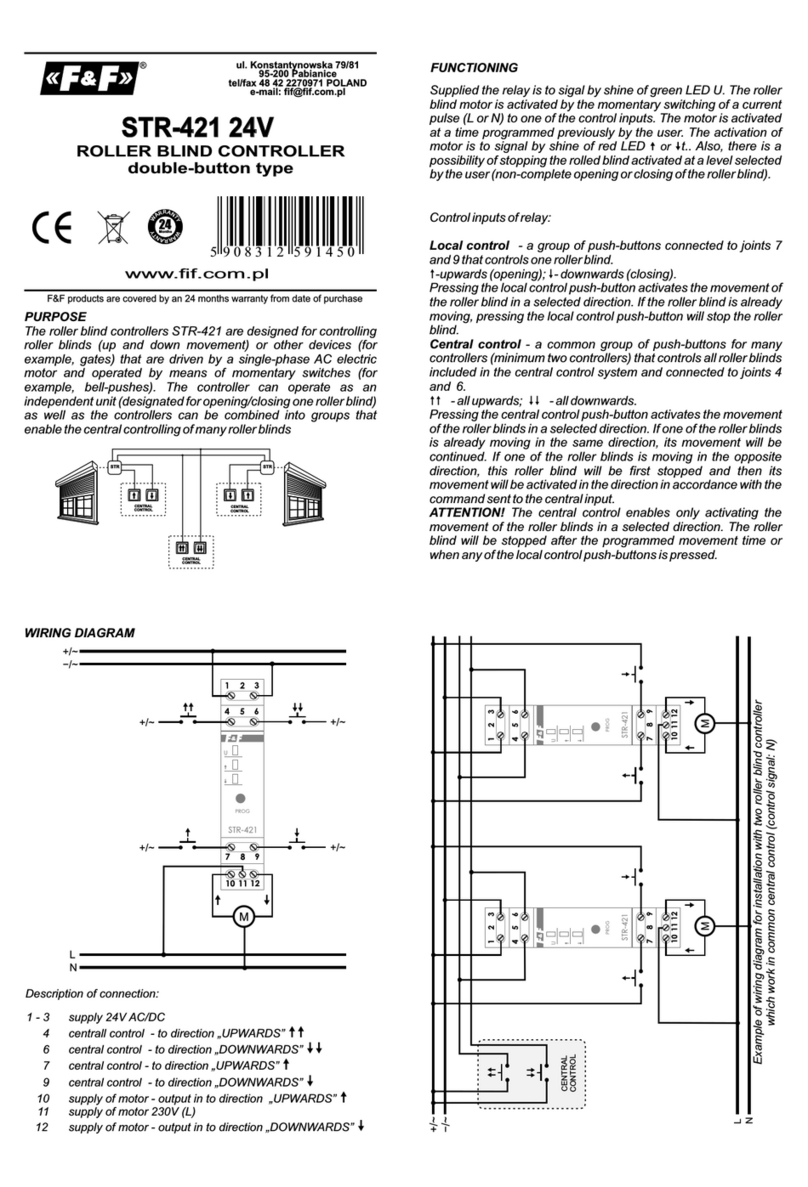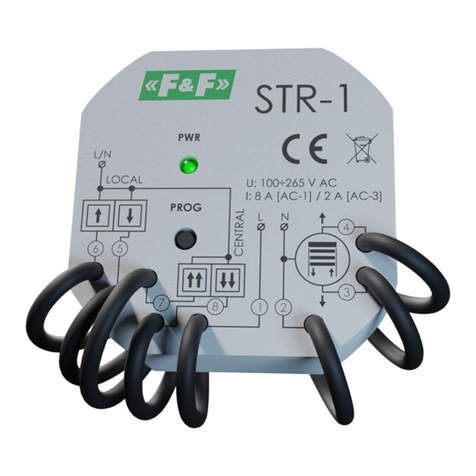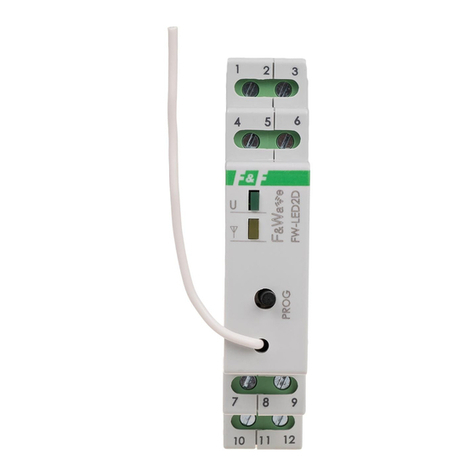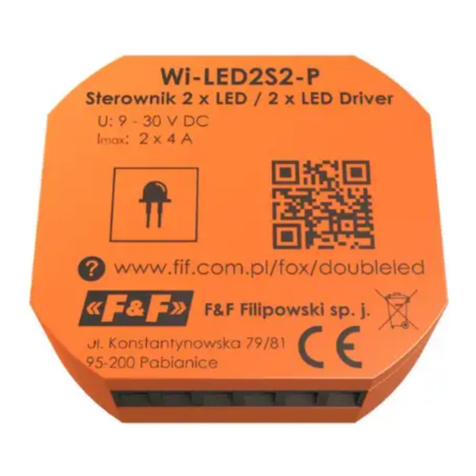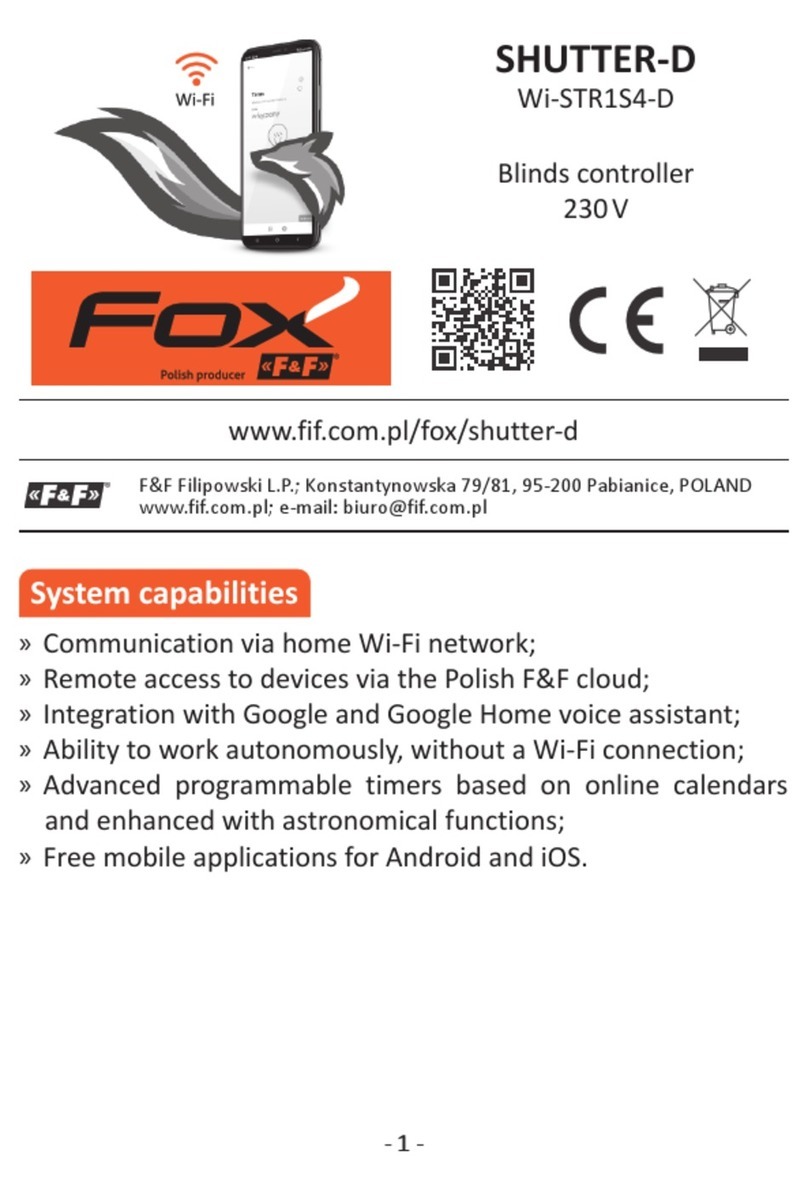
- 6 -
1-3 power supply 100÷265 V AC
4 central control – ↑↑ direction
6 central control – ↓↓ direction
7 local control – ↑ direction
9 local control – ↓ direction
10 motor power supply – ↑ direction
11 power supply input 230 V AC (L)
12 motor power supply – ↓ direction
Wiring diagram
If during the first 30 seconds of the learning mode (slow
flashing of U LED) the time measuring will not start (the
key is pressed or the roller blind is activated from
the local control input), the controller will exit the learn-
ing mode.
The controller is designed to measure time span shorter
than 15 min. Attempting to set the controller for longer
span will result in exit from the learning mode.
The controller learning mode can be started only when
the roller blind motor is turned off.
Operation with factory settings (activation time set to 30
seconds) is indicated in standby mode by short (0.1 s)
blinking of U LED repeated every 4 s.
The application examples listed below can be downloaded from
the website www.fif.com.pl from the product subpage:
1.Wiring example: one local button mode.
2.Wiring example: two local button mode.
3.Group control example.
4.Example of extensive control with division into additional
groups of roller shutters.
Application examples






